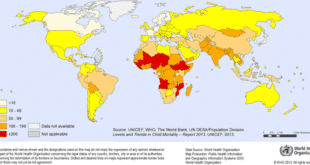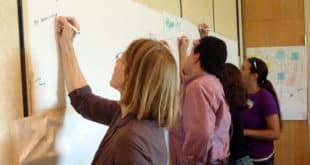Swim lane diagrams (also called ‘Rummler-Brache Diagrams’ and ‘Cross-Functional Flowcharts’) are a great way to break-down a process and visualise its steps. You can use this method to explore inefficiencies in a process and make improvements. The diagrams are also useful for communicating a process in chart-form to other people …
Read More »Tag Archives: Strategic Planning & Policy
Swim Lane Template (Cross-Functional Diagram)
Swim Lane diagrams are used to document and visualise processes in and between organisations. Mapping out the steps that groups / departments undertake can help to identify problems and areas of inefficiency. This simple Swim Lane diagram template can help you visualise processes in your organisaiton. Download the Swim Lane …
Read More »Three quick ways to find national statistics for your next proposal or presentation
It used to be that finding national statistics was a time consuming business. You had to hunt through government reports, many of which were not available online, or were of dubious origin. You could spend days just trying to find a few numbers for the opening sentence of your proposal or presentation. These …
Read More »How to write a logical framework (logframe)
Download logframe template and example Love them or hate them, logical frameworks (logframes) have become a staple of international development programs. Most donors will require one as part of your proposal, and it’s the first things an evaluator will ask for. Our logframe template is one of the most popular downloads on tools4dev. This …
Read More »Doing basic gender analysis for your project using Gender Analysis Tools
Download the Gender Tools Gender is an important topic in international development / aid. Most donors ask you to explain how your project will address issues related to gender, and it can be difficult to know how to address that part of the proposal unless you’ve done a gender analysis. …
Read More »Assessing your strengths and weaknesses with the McKinsey Organizational Capacity Assessment Tool (OCAT)
Run the online OCAT International development programs often try to build the capacity of organisations. In some cases, donors try to help implementing organisations improve how they work. In other cases organisations themselves realise there is room to improve. To help with this process the international consulting firm McKinsey & …
Read More »How to use root cause analysis to fix problems
All aid projects face problems at one stage or another. It could be that an employee stole money from the project, or that an activity kept running for years even though it was ineffective. It can be tempting to put these problems down to individual people. The employee was unethical, …
Read More »Should I use interviews or focus groups?
Deciding whether to use interviews or focus groups for collecting qualitative data is an age old question that plagues every international development / aid worker at some point in their career. Some experts think interviews are better, some think focus groups are better, while others say it depends on the situation. …
Read More »Risk assessment template
Before implementing any type of international development / aid program it’s a good idea to identify all the risks you might face, and work out what you are going to do about them. Risks to the program might include internal issues, such as the necessary resources not being available or …
Read More »Strategic plan template
Strategic planning is the process of defining an organisation’s direction – where the organisation is going and how it’s going to get there. Most organisations conduct strategic planning every 3-5 years. There are lots of different ways to do a strategic plan, and lots of different structures for the final …
Read More »









